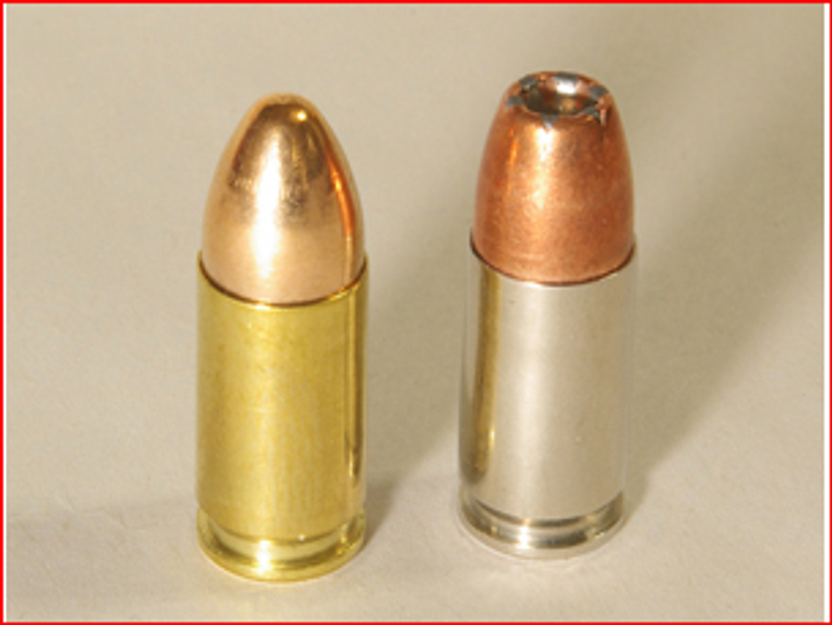History of 9mm ammunition | Capital Cartridge
Posted by nyllah123 on 19th Sep 2025
History of 9mm Cartridge
The 9mm cartridge stands as the reigning champion of firearm cartridges, holding its title as the most popular choice to date. It represents a significant advancement from the smaller .380 ACP round, which remains highly favored for concealed carry purposes. The 9mm cartridge strikes an ideal balance between power and size, benefiting from continuous enhancements in bullet and powder technology to ensure an exceptional shooting experience.
The history of the 9mm cartridge follows a relatively straightforward narrative.
Who made the 9mm?
Georg Luger developed the 9mm cartridge as an enhancement to his existing 7.65×21mm Parabellum round. In 1902, it was officially introduced by Deutsche Waffen-und Munitionsfabriken (DWM) for their Luger semi-automatic pistol, thus earning the name “9mm Luger.” Originally embraced by the German navy, its rapid rise to popularity came with its adoption in submachine guns. Following the First World War, it became widely accepted by various armed forces, which standardized its use in semi-automatic handguns for law enforcement, military, and self-defense purposes.
Why is it the most popular caliber?
The factors contributing to the surging popularity of the 9mm cartridge differ based on individual perspectives. However, when examining the fundamentals, three primary advantages emerge, distinguishing it from other calibers. These advantages can be summarized as follows: Ease of Use, Cost Efficiency, and Effectiveness.
Ease of Use and Shooting
In contrast to many other defensive calibers, the 9mm exhibits minimal muzzle flip and recoil. This characteristic proves advantageous for individuals across skill levels, making it suitable for both beginners and experts. For novice shooters, managing recoil can be challenging. However, the light recoil of the 9mm enables inexperienced individuals to swiftly grasp essential firearm fundamentals such as trigger control and sight picture, without enduring excessive recoil-induced discomfort
Economics or Cost of Shooting 9mm ammunition
9mm ammunition offers excellent affordability, allowing for the purchase of a larger quantity of rounds. With cost-effective options, you can allocate your budget accordingly, whether you intend to spend $10 or $100 each month on practice. Opting for 9mm provides the advantage of obtaining more ammunition for your money. Having access to a greater quantity of ammo translates to increased practice opportunities, ultimately enhancing your skill level. Additionally, reloading proves to be a cost-effective solution. Thanks to the widespread popularity of the 9mm caliber, acquiring bulk brass from reputable sources like Capital Cartridge is readily accessible.
Effectiveness of the 9mm round
A significant ongoing debate revolves around the effectiveness of various calibers for self-defense purposes. While the average 9mm load may not match the effectiveness of rounds like 357SIG, .45ACP, .40S&W, or 10mm, it is crucial to consider the top-performing loads within each caliber. Upon closer examination, one will observe that these top loads demonstrate remarkably similar terminal performance in terms of their ability to expand, penetrate, and effectively neutralize potential threats.
What is 9mm ammunition made out of?
The 9mm cartridge exhibits a range of variations that utilize different metal or alloy combinations during production. For instance, the M882 9mm cartridge, commonly found in military ammunition, features a bullet with a copper-jacketed lead core, a brass case, a double-base propellant, and a boxer-type two-piece primer. Conversely, the Full Metal Jacket (FMJ) refers to a bullet with a steel or copper alloy coating. In contrast, the Soft Point Bullet (SP) exposes the lead and does not employ a full metal jacket for coating the bullet with a metal alloy.
The casings that house the powder are commonly crafted from brass, although variations coated with nickel and other metals are also prevalent. In certain European countries, steel or aluminum is utilized as the case material. Among these options, 9mm brass casings reign as the most popular choice in the United States, particularly for reloading, thanks to their convenient upkeep and cost advantages. With meticulous case preparation, they can be reused multiple times. These casings possess a case length of 19.15mm and employ small pistol primers.
What type of guns use the 9mm cartridge?
9mm cartridges are specifically designed to be used in handguns. However, nowadays they are effectively used in Pistol-Caliber Carbines as well.
Following are some popular Pistols and Pistol-Caliber Carbines that use 9mm cartridges:
- Pistols: CZ-75 SP-01, Glock 17, Beretta 92FS, Heckler and Koch VP9, Walther PPQ.
- Pistol-Caliber Carbines: Kel-Tec Sub-2000, Angstadt Arms UDP-9 SBR, Beretta Cx4 Storm, JP Enterprises GMR-13, Just Right Carbines.
Interesting facts about the 9mm
The 9mm cartridge, also known as the 9 x 19mm cartridge, is referred to by various alternate names such as 9mm NATO, 9mm Parabellum, and 9mm Luger. However, it’s important to note that these names all represent the same cartridge.
The term “Parabellum” in 9mm Parabellum originates from the Latin adage, “Si vis pacem, para bellum,” which was adopted as a motto by DWM. Translated, it means “If you seek peace, prepare for war.”
For further information or to purchase once fired 9mm casings for reloading, feel free to reach out to Capital Cartridge. They cater to orders ranging from small batches to truckload quantities.

